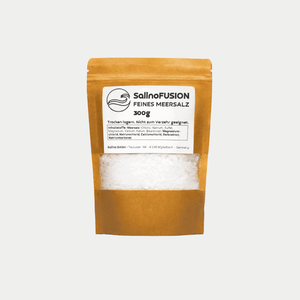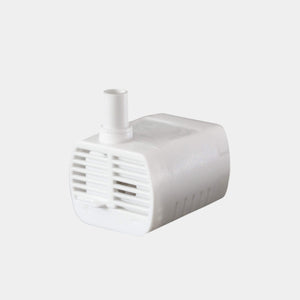Take a breath in the land of brine

There are moments when a breath becomes more than routine—it becomes a memory, a stillness, a healing agent. Anyone who has ever stood in front of a graduation tower knows this moment: The air is heavier, tastes of salt, yet carries a liberating lightness. Saxony-Anhalt, a state steeped in brine springs, salt history, and ancient spa towns, is home to some of Germany's most impressive graduation towers.
From Bad Dürrenberg to Bad Kösen, these sites tell stories that date back centuries. They are silent monuments to a time when salt was considered "white gold," and at the same time, vibrant places where people today seek relaxation, health, and nature. Between river landscapes, historic spa gardens, and old salt towns, a climate is created that not only cleanses the respiratory system but also calms the mind.
But anyone who wants to experience salt air regularly encounters limitations here too: entrance fees, travel costs, and the time required. In the long run, this all adds up – both financially and organizationally. Therefore, many people are asking whether the experience can be incorporated into their everyday lives. Before considering this possibility, we travel to Saxony-Anhalt's most important graduation towers – places where breathing in the salt air itself becomes an encounter with history.
Bad Dürrenberg - Salt air on the Saale
Bad Dürrenberg is home to Germany's longest continuous graduation tower. At over 636 meters long, the mighty Blackthorn Wall stretches along the Saale River—a structure that has attracted people for centuries. Of the five original graduation towers, graduation towers I to III, along with their connecting structures in the spa gardens, are still fully or partially preserved.
The brine drips incessantly over the bundles of twigs, which rise about 12 meters high, dispersing into the air and creating a climate that visitors describe as intense and pure. The view is particularly impressive in the morning light, when the sun makes the drops sparkle and the monotonous trickling sounds like a soothing heartbeat.
Bad Dürrenberg is not just a place for the respiratory system, but an experience for all the senses – here, history can be truly breathed in. Even from afar, on the terrace above the Saale River, the mighty, 12-meter-high wooden structures are visible. These brushwood-filled structures are a landmark of Bad Dürrenberg.
The history of the graduation towers dates back to the 18th century. Johann Gottfried Borlach, a mining councilor to the Electorate of Saxony, began geological surveys in and around Dürrenberg on June 25, 1741. Today, the facility is a technical monument and has undergone extensive renovations in recent years. The restored graduation tower was officially inaugurated in 2022.
Bad Dürrenberg's spa gardens are spacious and, in addition to the graduation tower, feature a palm and bird house, as well as extensive walking paths. Many visitors combine their stay at the graduation tower with a leisurely stroll in the park or a bike ride along the Saale River. The location on this picturesque river adds to the charm of the town.
Bad Kösen - Salt air in the Unstrut Valley
Bad Kösen, on the edge of the Saale-Unstrut wine-growing region, is famous for its graduation tower, which stretches through the spa gardens like a dark, breathing wall. With its enormous dimensions of 320 meters long and 20 meters high, the graduation tower is a unique sight. It is located in one of Bad Kösen's three spa gardens, and a staircase leads down to the banks of the Saale River.
Here, the region's rich salt history blends with a landscape characterized by vineyards, river valleys, and cultural monuments. Visitors report that the salt air here has a particularly dense and grounding effect—a blend of mineral weight and the lightness of the river landscape.
The saline technology in Bad Kösen is unique in Europe in its complexity. The graduation tower is just the tip of the iceberg. A waterwheel, located directly beside the Saale River, drives a double wooden rod that pumps the brine from the Borlach shaft to the graduation tower. This historic technology is still in operation today and fascinates visitors from all over the world.
A walk along the graduation tower thus becomes a ritual that combines health and enjoyment of nature. The saline conveyor system with graduation tower is a unique technical monument and is a listed building. Visitors can not only enjoy the salt air but also admire the impressive engineering skills of past centuries.
Schönebeck (Bad Salzelmen) - Healing tradition for centuries
Located in Schönebeck near Magdeburg, Bad Salzelmen is one of Germany's oldest saline spa towns. The graduation tower in the spa gardens is a central landmark of the town and testifies to a long tradition dating back to the Middle Ages.
Those who walk here can feel the salty air thickening over the paths, simultaneously radiating a profound sense of calm. Visitors often combine their stay with a visit to the historic saltwater park, where the healing properties of salt have been documented for centuries. Bad Salzelmen combines history and health in a way that few other places demonstrate so impressively.
The town of Schönebeck can look back on over 1,000 years of salt production. This "white gold" shaped not only the economy but also the town's culture and identity. Today, the graduation tower is a living testament to this history and is used extensively for health purposes.
Bad Salzelmen's spa gardens are lovingly designed and, in addition to the graduation tower, feature healing springs, hiking trails, and historic buildings. The combination of brine and mud makes Bad Salzelmen a holistic health resort. Many spa guests spend several weeks here, taking advantage of the diverse range of rejuvenating options.
Conclusion: Salt air in Saxony-Anhalt between tradition and everyday life

Saxony-Anhalt is a state steeped in salt history—from the mighty salt works in Bad Dürrenberg to the impressive graduation tower in Bad Kösen and the tradition-steeped Bad Salzelmen. Each place tells its own story: of medieval brine springs, of technical masterpieces, and of spas that have brought healing to people for centuries.
Bad Dürrenberg impresses with Germany's longest continuous graduation tower. The 636-meter-long facility is both a monument to salt history and a modern health resort. Bad Kösen fascinates with its unique saltworks, which combines historical technology with healing salt air. Bad Salzelmen represents over 1,000 years of salt tradition and demonstrates how deeply rooted the "white gold" is in the culture of Saxony-Anhalt.
Together, they form a network of breathing spots that not only promote health but also interweave landscape, culture, and memory. Those who visit these places experience more than just salt air—they experience a piece of German cultural history that can be felt with every breath.
Keeping an eye on costs
As soothing as the visit may be, anyone who regularly visits graduation towers knows their limitations: entrance fees, travel distances, and time commitment. The graduation towers in Saxony-Anhalt are generally freely accessible, which makes them particularly attractive. However, the journey should not be underestimated.
It's about 45 kilometers from Magdeburg to Bad Dürrenberg, and about 35 kilometers from Halle to Bad Kösen. With multiple visits per week, the distance quickly adds up. Add to that the time invested: Getting there and back, finding a parking space, and the actual stay can easily add up to two to three hours.
Over time, these excursions add up to a noticeable burden. What begins as a special experience quickly becomes a question of practicality. Many people would like to enjoy the salt air more often, but are reluctant to make the regular effort.
The alternative for everyday life
A mini-saltworks could be the answer. It applies the principle of large graduation towers to everyday life in a compact form. A saline microclimate is created within your own home—regardless of opening hours or travel distances.
The principle is the same as in the larger systems: saline brine is passed over a surface and evaporates into fine aerosols that enrich the room air. The effect is comparable to a visit to a graduation tower, except that it's available daily and effortlessly.
Compared to the recurring expenses of frequent visits to the spa gardens, such an investment often pays for itself in just a few months. Even if the trip to the free graduation towers is free, the fuel costs add up with regular use. With a fuel consumption of 7 liters per 100 kilometers and a fuel price of €1.70, an 80-kilometer drive (round trip to Bad Dürrenberg from Magdeburg) works out at about €9.50 per visit. With two visits per week, that's about €76 per month, and over €900 per year.
A high-quality mini-saltworks is often cheaper than the travel costs to the graduation towers after just a few months - and this with daily availability instead of just twice a week.
The best of both worlds
Thus, the salt air remains not only an experience at Saxony-Anhalt's great monuments, but also becomes a daily companion for respiratory health, well-being, and inner peace. The monumental graduation towers in Bad Dürrenberg, Bad Kösen, and Bad Salzelmen remain special places for conscious time-outs—places worth visiting again and again to experience the power of history and the beauty of the landscape.
The local mini-saltworks, on the other hand, are a quiet companion in everyday life. It doesn't replace the experience of a visit to Bad Dürrenberg, where you can admire the 636-meter-long facility along the Saale River. It doesn't replace the fascination of the historic pumping technology in Bad Kösen. But it makes the health benefits of salt air available every day—in the morning after waking up, in the evening before going to bed, while working from home.
Historical tradition and modern everyday solutions complement each other perfectly. Saxony-Anhalt's graduation towers are a cultural heritage site and a tourist destination, while the mini-saltworks offer daily healthcare. Together, they form a concept that combines past and present, experience and routine, special moments and everyday care.
(Image sources: Adobe Stock)



